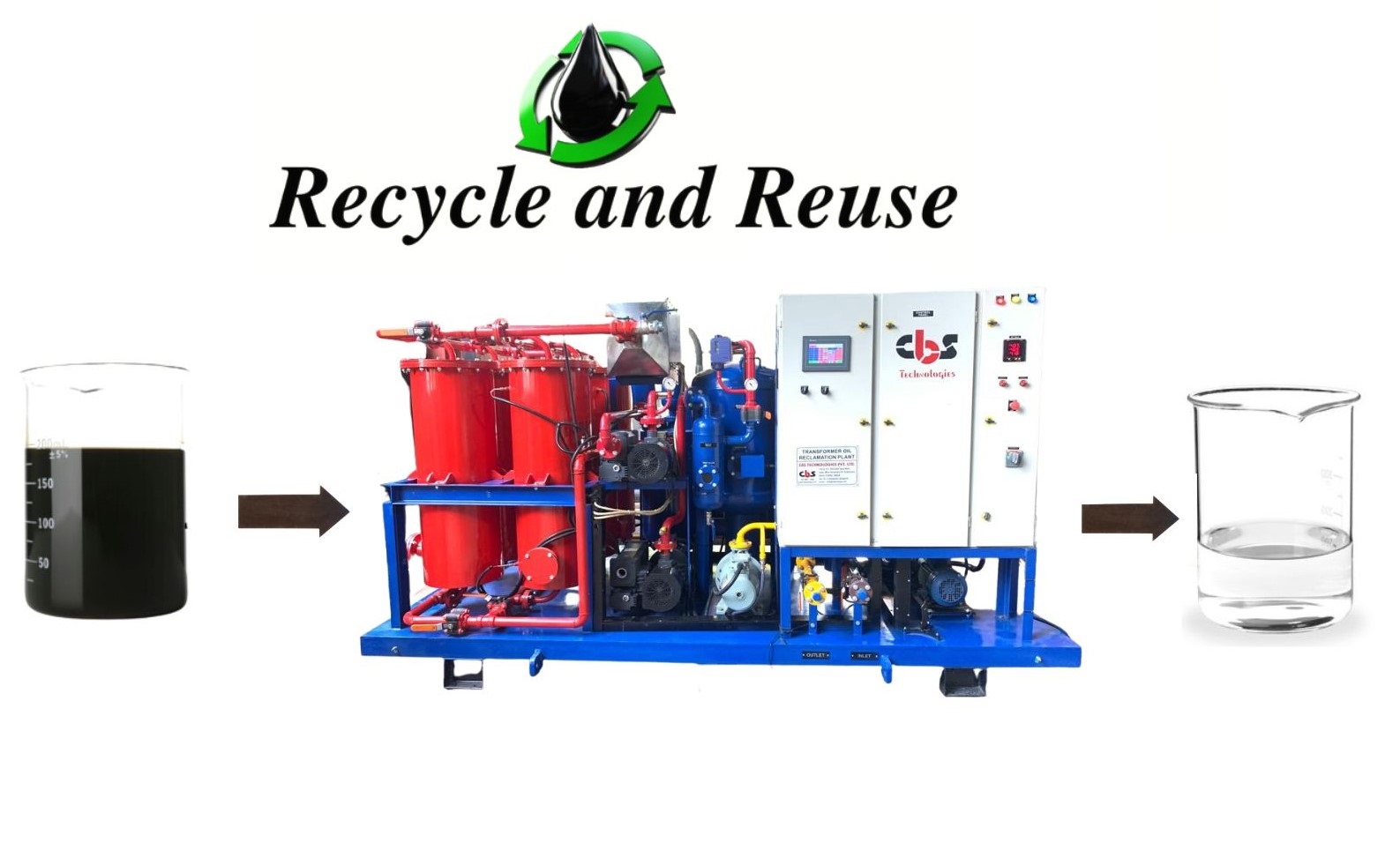Essential Insights into Transformer Oil Regeneration for Operators
How Regenerated Transformer Oil Expands Transformer Life-span
The duty of transformer oil is essential in ensuring the reliability and durability of transformers, working as both an insulator and coolant. Restored transformer oil offers a compelling remedy to improve these features by effectively eliminating hazardous pollutants that compromise performance. Via a meticulous regrowth process, the oil's dielectric homes and thermal stability can be brought back, resulting in significant enhancements in functional efficiency. Recognizing the complexities of this procedure and its more comprehensive effects for transformer upkeep discloses a pathway to not only prolong life expectancy yet also enhance expenses in power monitoring systems.
Importance of Transformer Oil
Transformer oil plays a vital duty in the efficient procedure of electrical transformers. It largely works as a shielding tool, making sure and stopping electric discharges that elements run securely under high voltage problems. The oil's dielectric residential or commercial properties are essential to maintaining the integrity of the transformer, as they minimize the threat of failings that might result in tragic cases or pricey downtimes.
Along with its insulating capabilities, transformer oil likewise works as a coolant. As transformers run, they produce warm that needs to be dissipated to avoid overheating and subsequent damage. The oil circulates within the transformer, moving and soaking up warm away from essential elements, thereby keeping ideal operating temperature levels.
Moreover, transformer oil functions as a barrier versus wetness and contaminants, which can endanger the performance and longevity of the transformer. Its chemical residential or commercial properties aid in reducing the effects of acids and other byproducts that may create gradually, adding to the overall health and wellness of the electric system.
Advantages of Regenerated Oil

In addition, regenerated transformer oil has a lower level of pollutants, including bits and pollutants that can weaken performance. This pureness not only boosts the oil's thermal conductivity yet additionally prolongs the functional lifespan of transformers by reducing overheating threats. The boosted thermal stability of restored oil ensures consistent efficiency also under high operating temperatures, which is important for preserving transformer effectiveness.
An additional advantage is its ecological influence. Regenerated oil promotes sustainability by decreasing waste and the requirement for new oil manufacturing, therefore lowering the carbon impact connected with transformer maintenance. Regenerated Transformer Oil. The durability of regenerated oil translates to lower upkeep prices over time, as less oil modifications and less frequent equipment downtime are required.
Process of Oil Regeneration
The regrowth of transformer oil involves a methodical process created to bring back the oil's initial buildings and improve its efficiency. This procedure generally begins with the elimination of the utilized oil from the transformer, which is then subjected to various filtration strategies.
The very first step in the regeneration procedure is the purification, where solid pollutants such as dirt, metal, and sludge bits are removed. This is frequently complied with by vacuum cleaner purification, which assists to get rid of moisture and volatile compounds, consequently boosting the oil's dielectric toughness.

Effect On Transformer Performance
Bring back the homes of regenerated transformer oil considerably affects the general efficiency of transformers. Improved dielectric stamina is one of the most critical advantages, as it permits much better insulation and reduces the likelihood of electric break down. This renovation results in a much more stable operation under high voltage conditions, eventually causing raised performance.
In addition, the removal of contaminants and deterioration items during the regrowth procedure minimizes the danger of getting too hot. Cleaner oil promotes much better heat dissipation, which is essential for preserving optimum operating temperatures. Consequently, the thermal performance of the transformer is enhanced, permitting higher lots without compromising dependability.
Additionally, the chemical security of restored oil ensures prolonged operational life. It withstands oxidation and deterioration, lowering the regularity of upkeep treatments and oil substitute. This stability not only contributes to improved performance however additionally lines up with sustainability goals by lessening waste.
Future of Transformer Upkeep
As developments in modern technology remain to reshape the landscape of electric design, the future of transformer maintenance is positioned for additional reading considerable improvement. The assimilation of clever technologies, such as IoT sensors and predictive analytics, allows real-time surveillance of transformer health, enhancing the capability to preemptively address issues before they rise right into significant failings. This proactive method not only takes full advantage of functional efficiency yet also prolongs the lifespan of transformers.
Moreover, the application of expert system (AI) in information analysis allows for even more precise fault discovery and diagnosis. By leveraging artificial intelligence formulas, maintenance groups can determine patterns in functional information that human analysts might ignore, resulting in more informed decision-making.
Furthermore, the fostering of environmentally friendly click this practices, including using regenerated transformer oil, is established to redefine upkeep protocols. This lasting approach not only decreases environmental effect but additionally improves the general wellness of the transformer.
Lastly, the change in the direction of automation in maintenance processes is anticipated to simplify procedures, decrease downtime, and reduced costs. As these developments remain to evolve, the future of transformer upkeep will certainly end up being much more efficient, trustworthy, and lasting, guaranteeing the integrity of essential electrical facilities.
Conclusion
The utilization of regenerated transformer oil substantially enhances the functional durability of transformers. Ultimately, the fostering of regenerated oil represents an essential development in transformer maintenance, guaranteeing optimal performance and sustainability in the monitoring of electrical framework.
The role of transformer oil is vital in ensuring the integrity and durability of transformers, offering as both an insulator and coolant.Transformer oil plays an important role in the reliable procedure of electric transformers. Regrowed oil promotes sustainability by decreasing waste and the need for new oil production, consequently lowering the carbon impact associated with transformer upkeep.Bring back the buildings of regenerated transformer oil substantially influences the total performance of transformers.The usage of regenerated transformer oil significantly boosts the functional long life of transformers.